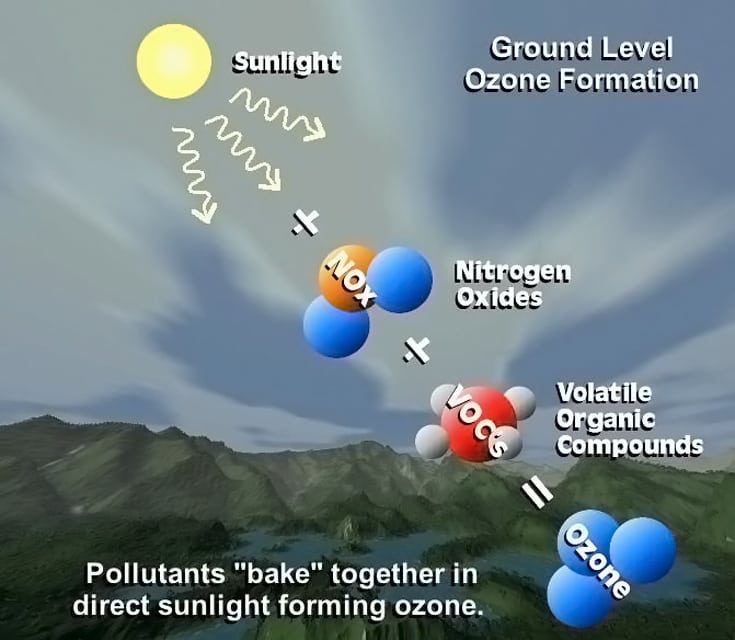
Agencies launch Tri-City ozone study after high readings in area
By Ranil Dhammapala
Ground-level ozone, not to be confused with “good” ozone in the earth’s upper atmosphere that shields us from harmful ultraviolet radiation, is toxic to human health.

Exposure to ozone irritates the eyes, nose, throat and the respiratory system. It is especially bad for people with chronic heart and lung disease, pregnant women as well as the very young and elderly.
Air quality specialists at the Washington Department of Ecology monitor air quality across the state to ensure we’re meeting federal health-based standards. Recent monitoring data collected in partnership with Benton Clean Air Agency indicate levels of ozone are higher than we’d like in the Tri-Cities. Ozone readings in Kennewick are about as high as those downwind of the Seattle area.
Because of the health risks associated with ground-level ozone pollution, we need to figure out how to manage it – and are launching a study of sources in the Tri-City area.
Ozone forms in the air when certain gases from individual sources react together on hot summer days. These gases are known as ozone precursors.
Nitrogen oxide (NOx), a combination of oxygen and nitrogen, is a common air pollutant in the recipe for ground-level ozone. Also in the mix are volatile organic compounds (VOCs), a large group of carbon-based chemicals that easily evaporate at room temperature and come from a variety of natural and manmade sources.
The hot weather, in particular sunlight, bakes the ingredients of NOx and VOC, creating the harmful ozone pollutant.
Let’s fix the problem
Before we can control ozone, we need to know where the ozone precursors are coming from.
We’re taking a team approach. For three weeks in July and August, we hope to quantify compounds such as ozone, carbon monoxide, and nitrogen oxide in the air by taking several high-tech measurements.
Washington State University and RJ Lee Group Inc. are on contract to complete a majority of the work. We will also conduct some measurements as part of the study. Our friends south of the border in Oregon are also concerned about an ozone buildup in Hermiston. So the Oregon Department of Environmental Quality is conducting field monitoring that coincides with our study.
What happens next
These measurements will tell us where VOCs and NOx are coming from and potentially what are causing high levels of ozone in the area.
Please stay tuned. Study results are expected around mid-2017. We will share the results and next steps and looking for input from the local Tri-City community.
Meanwhile, we all can take important steps to reduce ozone pollution in our communities.
To check air quality in the Tri-Cities, go to bentoncleanair.org. If you have questions about the study, email ranil.dhammapala@ecy.wa.gov. Ranil Dhammapala is a Department of Energy atmospheric scientist.
Tips to reduce daily pollution:
- Conserve energy: at home, at work, everywhere.
- Look for the Energy Star label when buying home or office equipment.
- Carpool, use public transportation, bike, or walk whenever possible.
- Follow gasoline refueling instructions for efficient vapor recovery, being careful not to spill fuel and always tightening your gas cap securely.
- Consider buying portable gasoline containers labeled "spill-proof," where available.
- Keep car, boat, and other engines properly tuned.
- Be sure your tires are properly inflated.
- Use environmentally-safe paints and cleaning products whenever possible.
- Mulch or compost leaves and yard waste.
- Consider using gas logs instead of wood.
On days when high ozone levels are expected, take these extra steps:
- Combine errands and reduce trips. Walk to errands when possible.
- Choose a cleaner commute-share a ride to work or use public transportation.
- Avoid excessive idling of your automobile.
- Refuel your car in the evening when it's cooler.
- Conserve electricity and set air conditioners no lower than 78 degrees.
- Defer lawn and gardening chores that use gasoline-powered equipment, or wait until evening.
On days when high particle levels are expected, take these extra steps:
- Reduce the number of trips you take in your car.
- Reduce or eliminate fireplace and wood stove use.
- Avoid burning leaves, trash and other materials.
- Avoid using gas-powered lawn and garden equipment.
-Source: U.S. Environmental Protection Agency
